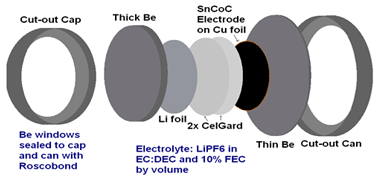Sounds like fun.Is there going to be a FREYR Festival?
According to google, it will involve walking around half naked with a sword and a pig.
You can install our site as a web app on your iOS device by utilizing the Add to Home Screen feature in Safari. Please see this thread for more details on this.
Note: This feature may not be available in some browsers.
Sounds like fun.Is there going to be a FREYR Festival?
I don't think this is possible due to differences in battery longevity. If current cells work for 400k miles and new cells are 1m miles there is far more inherent value in the latter - even if both packs allow the same distance on a single charge.Not necessarily - could be entirely about lowering cost of goods sold. For example could make all the current models with the same range at a cheaper build cost. That way it makes zero difference to customers, but makes a big difference to investors.
Now of course that doesn’t mean they couldn’t also introduce a higher range product, and also obviously would allow room in future for lowering the retail prices on current range models, but it doesn’t have to happen at battery day (and in fact will take a while to scale the new battery tech one imagines).
It's also possible charging the new cells to 100% and running them down to near zero on a regular has no negative impact on the battery.I don't think this is possible due to differences in battery longevity. If current cells work for 400k miles and new cells are 1m miles there is far more inherent value in the latter - even if both packs allow the same distance on a single charge.
Additionally (although probably unlikely), if the new packs are sufficiently energy dense enough and the weight of the vehicle is materially affected there may performance benefits in the latter that are just not possible in the former.
If your Grandmother lives near California and can take delivery of a performance model before the end of juneJust for the record: even my grandma doesn't have roundabout support. Maybe she should buy a Tesla.
Longevity of the pack has nothing to do with the form factor, its about implementing Jeff Dahn's new chemistry. That can be easily adopted as a running change in existing production lines.If current cells work for 400k miles and new cells are 1m miles there is far more inherent value in the latter - even if both packs allow the same distance on a single charge.
Hopefully, but that's an assumption. My understanding for various internet videos is that both chemistry and the DBE manufacturing process work towards inhibiting dendrite growth. Also, if the chemistry can be easily adopted why hasn't it occurred already?Longevity of the pack has nothing to do with the form factor, its about implementing Jeff Dahn's new chemistry. That can be easily adopted as a running change in existing production lines.
Dr. Jeff Dahn's lab does all his chemistry research using coin cells. Although its a totally different physical format, it's the actual chemistry they're testing.Hopefully, but that's an assumption. My understanding for various internet videos is that both chemistry and the DBE manufacturing process work towards inhibiting dendrite growth. Also, if the chemistry can be easily adopted why hasn't it occurred already?

Agreed, the new Tesla pack will have several improvements, most notable I think are:Perhaps my initial comment should have been more generalised to - if there's any performance characteristic outside of range per charge that is substantially improved through Tesla's new cells compared to ones manufactured by Panasonic there will be a difference in value between vehicles. As a result they would need to be priced differently.
I actually saw one in person today with manufacturer plates on. Not a bad looking car, but it struck me as pretty small.
View attachment 550523
I actually saw one in person today with manufacturer plates on. Not a bad looking car, but it struck me as pretty small.
View attachment 550523
Isn't there often a bit of a spike/dip at 7 or 7:30 as volume of day traders picks up, then again at 8:30 as more jump in and certain institutions open pre market trading? I know mine only offers trading from 8:30 to 5:30 ETAny news? TSLA just spiked 25 bucks in a matter a few minutes. Thought today was gonna suck with good macros thanks to GS downgrade.
it's always the opposite with GSAny news? TSLA just spiked 25 bucks in a matter a few minutes. Thought today was gonna suck with good macros thanks to GS downgrade.
Tesla (TSLA) – Tesla was downgraded to “underweight” from “equal-weight” at Morgan Stanley, which notes several factors including the automaker’s need for more capital, near term demand pressure, and tech competition.


